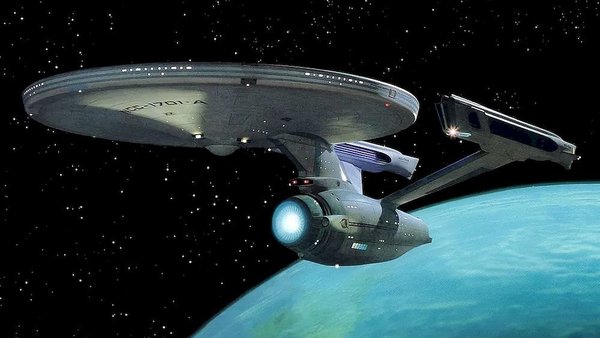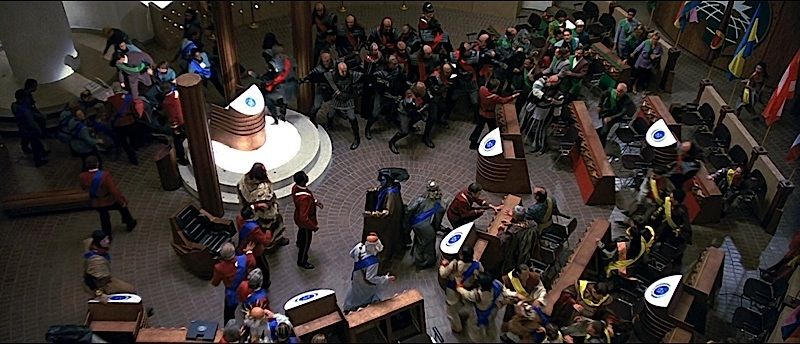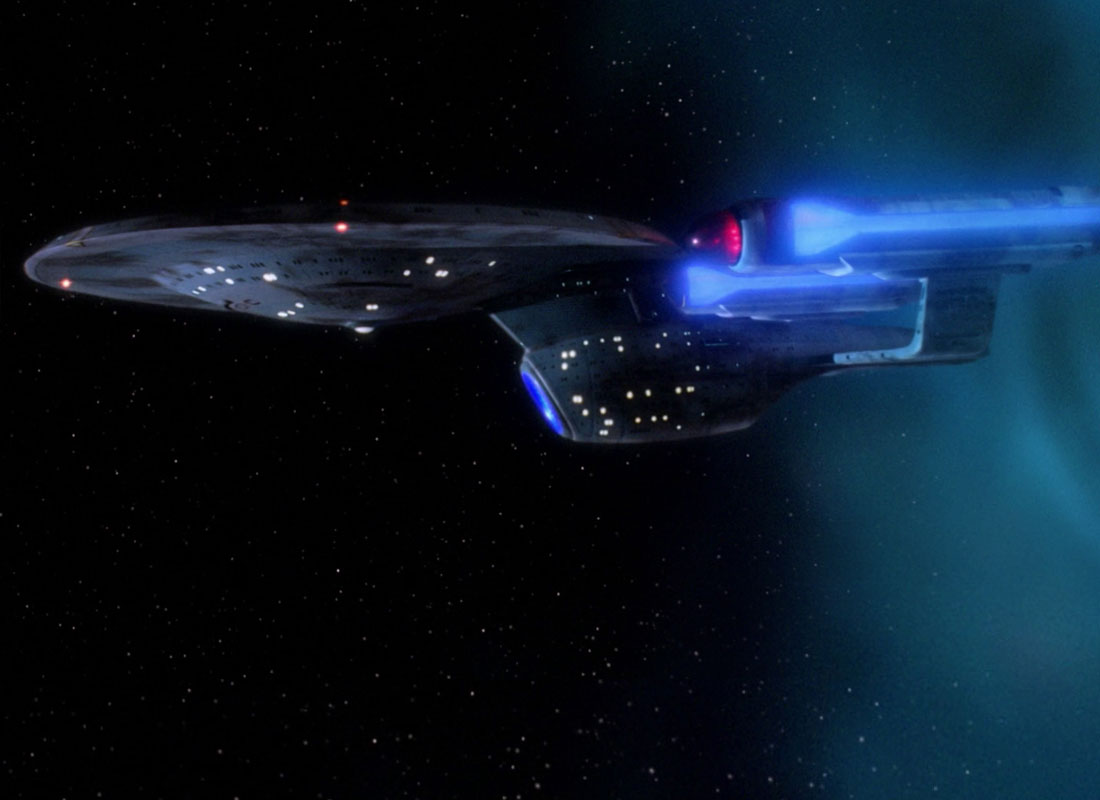We left off with our last history lesson in 2270. The Federation-Klingon Cold War was the main conflict in the Alpha Quadrant, but neither side was interested in escalating the situation, but it still diverted the attention from another series of events. The Lyran Empire came out from the General War completely exhausted, and it had no chance recovering, because Cardassians, a race previously kept in servitude took the opportunity and overthrew the Lyran rule on their homeworld and soon took over the whole empire. The continued the expansion into the similarly exhausted Hydran territories, and thanks to the indifference of the Federation, they managed to completely conquer the former kingdom in a few months. The Kzinthi could have been the next target, but by then they joined the Federation. And thus a new galactic power was born bordering both the Klingon Empire and the Federation: The Cardassian Empire, soon reformed into the Cardassian Union.

Meanwhile, during the 2270s, Starfleet made a complete overhaul of its vessels. Various reasons led to the decision to completely refit starships like the Constitution or the Asia class that would have been due to retire. First was the fact that refitting is always cheaper than building something new, because the most expensive part of a starship is the spaceframe (the “skeleton” of the starship) is built of special steels and alloys is the most expensive part of a starship. Stripping down a ship back to the spaceframe and rebuild it is cheaper and faster than building a brand new one, and it not only extended the lifespan of the standing fleet, but also gave Starfleet a temporary boost for the complete fleet power.
Another reason was the fact that after the General War Starfleet lacked innovative starship designs other than the Constitution and Pyotr Veliky Classes. Almost all of the other ships were based on these two designs. Refitting the fleet gave time to the Starship Design Bureau to catch up.

The third reason was the prolonged Excelsior Project. A new starship with a radical new FTL device called Slipstream Drive was in development for several years, but still far from being finished. already. This new technology would have meant a huge advantage for the Federation, and Starfleet wanted to implement it through the fleet, so refitted ships were designed to be able to accommodate the Slipstream Drive as soon as it becomes available. However the technology never worked, but the Excelsior Class still turned out to be one of the best ships Stafleet ever designed.
Similar overhaul was unnecessary for the Klingons as they constantly upgraded their starships .They had other issues to deal with anyway. The Klingon-Romulan technology transfer that was supposed to unite the strengths of both fleets, effectively stopped soon after it begun. The parties considered each other as a potential threat and had no intention to reveal too much to the other. The Klingons were satisfied with the cloaking device and their two Romulan-inspired vessel, the B’rel and K’vort Classes, and the Romulans were happy with the know-how of starship design and construction they learned from the Klingons. And they didn’t want to reveal their new technology still in development: the singularity energy core.
The parties eventually severed the connection when they matched their fleets in the battle of the Klach D'kel Brakt nebula in 2271, although formally the alliance was still in effect for another decade.
The Alpha Quadrant was relatively quiet for the next two decades. The Klingon-Federation cold war had only a few hot episodes, and the Romulans mostly left everyone alone. Starfleet turned its attention back to explore unmapped regions and colonize new planets.
The next major conflict in the region started when the Cardassian Union colonized planets that belonged to Klingon sphere of interest. When diplomatic discussions failed soon after they begun, the Klingons declared war in 2286. This was mostly to diffuse some of the tension within the Empire that built up because there was no real war for decades, and it remained a local conflict with usually a few skirmishes and only a few major battles in the next 18 years, when the belligents ceased hostilities and precisely defined their borders for the first time.
In 2293 an industrial accident on the Klingon moon Praxis caused a serious power shortage across the Empire and an ecological disaster on Qu’noS itself. Following these events Klingon chancellor Gorkon initiated peace talks with the Federation. The negotiations culminated in the Kithomer Accords, a treaty that ceased almost all hostilities between the parties for decades. This treaty was a major concern of the Romulan Empire and they made several attempts to destabilize the fragile ceasefire between the Federation and the Klingon Empire, starting with an assassination attempt during the Kithomer Conference. Breaking the ceasefire wouldn’t have needed much, because they didn’t trust each other at all at the time.

In 2311 a rogue Romulan commander, Admiral Vokar, an extremist in the Imperial Fleet planned to ram his ship, the ChR Tomed into an asteroid in the Foxtrot Sector, destroying several Federation colonies and starships. His plan was spoiled by the crew of the USS Enterprise-B, who captured his ship. Although they apparently fulfilled Vokar’s mission by ramming the Tomed into the asteroid, the colonies, and the only ship lost, the USS Agamemnon were emptied of all crew, and the crew manifests were filled with the names of recently deceased Starfleet officers.
The so-called Tomed Incident gave an opportunity to force the Romulans to establish a neutral zone between the Star Empire and the Federation, and the Romulans decided to severe all connection with the Federation for more than fifty years. Tal Shiar operatives remained active of course, trying to destabilize the Federation.
The late 2320s saw the tension between the Cardassians and the Klingons rise again, but the Romulans were unable to escalate the conflict to open war, in which the Federation would have been obliged to join the Klingons, but predictably reluctant to do so. Therefore this period is called the Klingon-Cardassian Cold War, with minor skirmishes.
Even worse for the Romulans, the Klingons and the Federation started to negotiate a lasting peace treaty in 2342. They changed strategy and in 2344 launched a surprise attack on the Klingon colony of Narendra III. With few Federation ships in the vicinity, the Romulans expected that none would arrive to save the colony. But one did, the USS Enterprise-C, which heroically defended the escaping Klingons against overwhelming opposition, and was eventually reported as lost with all hands. In fact the ship was captured by the Romulans.

The endeavor backfired, because the Klingons found respect in the heroic sacrifice of the Enterprise crew and through it their former arch enemy. The Romulans tried desperately to turn the tide, and they launched another attack on the colony of Kithomer in 2346, but all they managed to achieve was the quickening of the peace talks. In 2350 the Klingon Empire and the United Federation of Planets signed a formal alliance.
But while on one front the Federation secured peace, on another it failed to do so, because the Cardassians rapidly colonized regions close to the Klingon and Federation borders. With their “live and let live” attitude, the Federation didn’t stand in the way of these colonization efforts, not even when the Cardassians first forcefully annexed the planet Bajor in 2328 by deception, nor when they built the military base Terok Nor in the Bajor system in 2246. The Federation simply claimed that the Prime Directive didn’t allow interference. Even when colonist from both sides started to colonize planets in the previously established non-colonization zone – a buffer area subjected for future negotiations and the establishment of a Neutral Zone – the Federation decided to face to the other direction. However these colonization efforts lacked any coordination from the Federation, and were quite opportunistic to gain as much territory as possible on the Cardassian side. The result was an area of mixed population and conflicting interests. Both sides claimed these colonies as their own, and as neither party could afford to step back and allow its colonies to be taken over by the other, the situation inevitably became a military conflict by 2347. Although it wasn’t a major operation on either side – those colonies were not rich enough in resources, nor strategically important enough – the conflict lasted for two decades. It’s worth mentioning though that the Federation with a considerable amount of hypocrisy, never even mentioned Bajor in the peace talks when the conflict ended twenty years later.
But this is another story...
This concludes our history lesson for today. Thank you for reading Captains, and happy holidays!
k_merse


I only see one major problem. The official Star Trek Atlas places Cardassian space on the far side of the Federation from the Klingon Empire. The Tholian Assembly would sit between the Klingons and Cardassians if they attempted to wrap around Federation space. So the Klingon Empire and the Cardassian Union cannot share a common border.
I know, but there are too many contradictions, that I had to stretch Star Trek "canon" a bit.
The Klingons attacked the Cardassians to conquer them in Deep Space 9 and the Dominion managed to push them out of Cardassian territory and attack the Klingons without violating the borders of anyone else. Not to menbtion that with the Kithomer Accords being null and void at the time, any Klingon ship entering Federation space to contribute towards the war effort would be a direct aggression against the Federation.
According to DS9 the Cardassians should share border with the Klingons, the Federation and even the Romulans.
Not to mention how many issues it would cause to try to combine the official map with Empires & Federation that describes the General War.
That’s fair. Star Trek on the whole is fairly inconsistent, and I frequently wondered about those plot points.